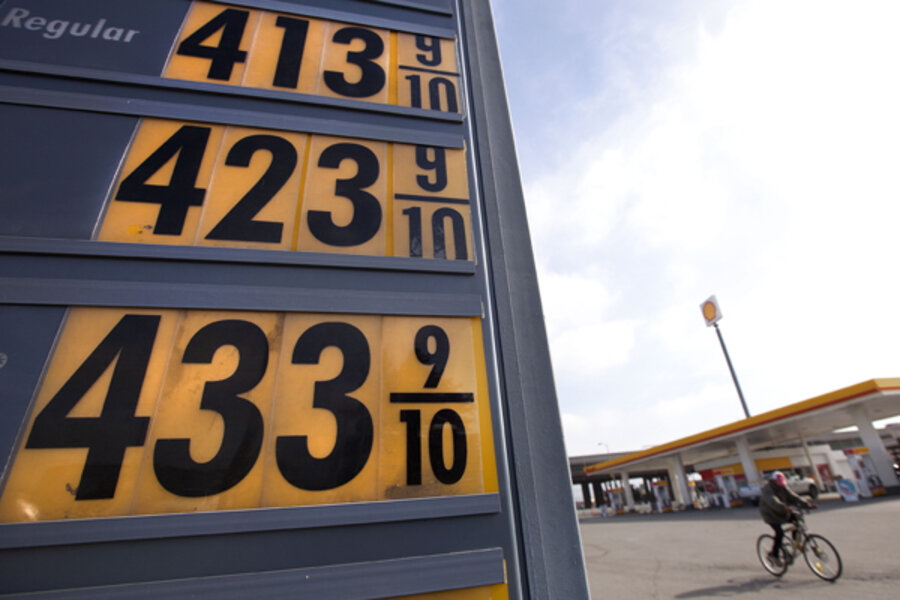$5 gas? Prices creep upward once again.
Loading...
| NEW YORK
Pump prices continued to march toward $4 a gallon Thursday, as signs of a stronger U.S. economy helped push benchmark oil past $108 per barrel.
The price of West Texas Intermediate, the U.S. oil used as a benchmark, rose $1.22 to $108.28 a barrel in afternoon trading on the New York Mercantile Exchange. Brent crude, which is imported by many U.S. refiners to make gasoline, rose $2.58 to $125.24 a barrel in London.
Oil prices have risen 9 percent this year because global demand is high and supplies have been disrupted in South Sudan, Syria and elsewhere. There also is concern that tensions with Iran over its nuclear program could lead to further supply problems.
Meanwhile, U.S. retail gasoline prices continued a five-week rise to a national average of $3.74 a gallon. That's up 37 cents per gallon, or 11 percent, since late January, the last time gasoline prices fell. Prices have never been so high in the U.S. at this time of the year.
Wholesale gasoline futures rose nearly 2 percent to $3.32 per gallon, suggesting that retail prices will keep rising in the coming days. Typically gasoline prices rise in spring as demand rises and refiners begin to make expensive summer blends of gasoline required to meet clean air laws.
The U.S. economy has continued to grow even though high oil prices are taking spending money from consumers and make shipping and travel more expensive.
Economic data released Thursday showed applications for unemployment hit a four-year low, spending on residential construction rose and major retailers reported stronger-than-expected sales for February.
Stock prices rose on Wall Street Thursday, helped by the encouraging economic news. That bolstered the feeling that the economy could start burning more oil.
"It's almost impossible for oil to stay down with equities rising," said Rich Ilczyszyn, an analyst at ITrader.
Economists worry that high oil prices will eventually take a toll on the economy, though.
"We've weathered it OK so far, but it could become a much stronger headwind than we anticipate," said Diane Swonk, chief economist at Mesirow Financial.
U.S. consumers have been helped by low heating and electricity bills this winter, which have eased the pain of high fill-up costs. The weather has been unusually mild across much of the country and natural gas, which is used to heat many homes and to generate electricity, has been cheap.
Natural gas futures fell about 5 percent Thursday to $2.48 per thousand cubic feet after the government reported that supplies of natural gas declined less than anticipated last week. The U.S. supplies in storage are 45 percent above the five-year average and prices are close to a 10-year low.
In other energy trading, heating oil rose 4 cents to $3.25 a gallon.





